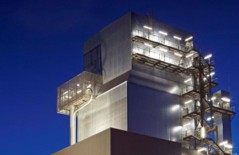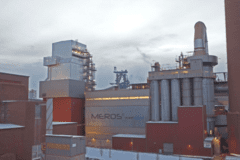DeNOx plant at voestalpine
voestalpine sets the standard
On 4 March 2013 during a press conference held by provincial council member Anschober and voestalpine member of the Management Board Lakata, the new DeNOx plant was presented at the sintering plant at the Linz site.
This is Europe's largest industrial-scale application of a DeNOx plant for the reduction of nitrous oxide emissions in sintering plants. This makes a substantial contribution to environmental protection in Linz.
Empirical values from operation of DeNOx plants in sintering plants had not been gathered in Europe, which is why the decision was made to experiment with a pilot system.
Successful startup of the system in December 2012 represents another contribution of voestalpine to the environmental compatibility of the production facilities. Because voestalpine has become the benchmark for low nitrous oxide emissions, long-term environmental compatibility is guaranteed in steelmaking at the Linz production site.
How the DeNOx plant works
The sinter gas from the MEROS plant flows in an initial step through a heat exchanger and then heated by a gas burner to 280 °C. Ammonia is then injected before the gas flows through a catalytic converter. Here the nitrous oxides (NOx) are reduced to nitrogen (N2) and water (H2O). This technological method is called selective catalytic reduction (SCR).
Nitrous oxides (NOx) are gaseous nitrogen compounds produced in combustion processes in vehicles, power stations, industrial operations and microbiological decomposition processes in the soil. Exposed flames (gas ranges, candles) and smoking are also sources of NOx. Nitrous oxides irritate and damage the breathing apparatus, form aggressive ground-level ozone and greenhouse gases. The main source of NOx is road traffic, especially diesel engines.


